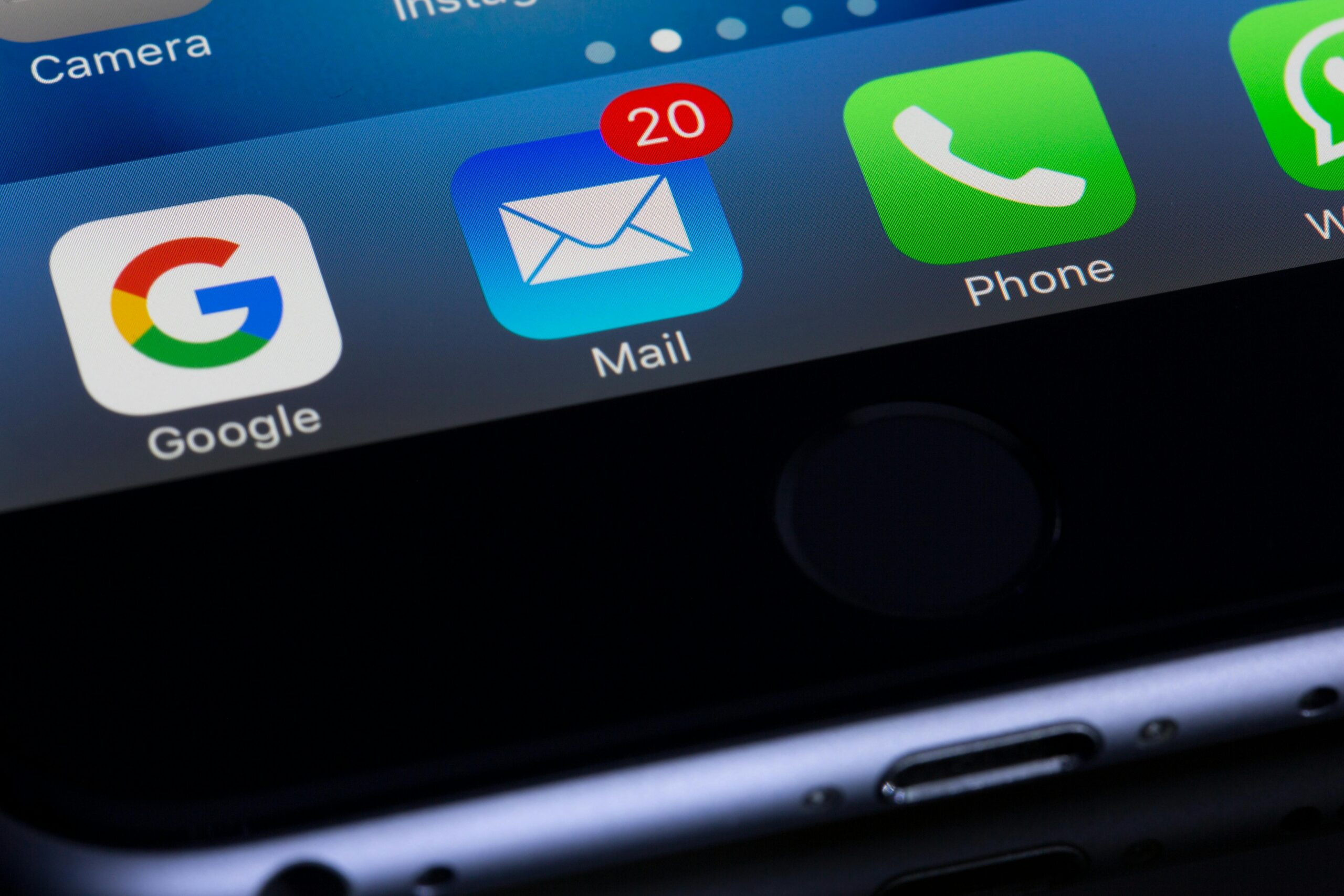When To Use Email

When to use email?
At least in sales.
At least once a week, a sales coaching client will send me a note that reads, “Adam, can you look at this email from (fill in the blank)? I want to win this account, but am not sure how to respond.”
Sometimes, the seller will include an email they’re thinking of sending, along with a request on what to change.
And my response is the same 90% of the time. I’ll share it with you in a moment.
If this sounds like you, you’re not alone. I just googled “How to use email for sales,” and I think I got 3 trillion articles. There were a lot of zeroes, so it may only be 3 billion. There are 3 million hits on, “How to write b2b emails,” whether or not you capitalize that.
That’s a lot of references. We’ll throw our hat into the ring on some ways to make this simpler for you.
But there are a few thoughts on email, and how to use it, before we get there.

Listen, I work with smart, talented people. They’re entrepreneurs, consultants, business owners, and professional service providers. They are world-class at what they do.
But they fall prey to a false belief about email.
Email is a wonderful tool. It’s both cheap and efficient. It’s the wrong tool for MOST conversations (and don’t get me started on Teams or Slack). We mistakenly believe that because email is cheap, and because others use it so much, that it’s the right tool for more conversations than it actually is.
It’s incredibly limited (for reasons I’ll share in a moment).
And that ends the conversation.
But it doesn’t.
We use email because it’s cheap and easy, and we end up getting lousy results in conversations with prospects and even clients.

(Credit: Polaris-Learning.com)
See that pie chart? I don’t know if anyone can prove it’s scientific, but most of us realize it’s in the ballpark.
Words are only a small portion of our communication.
It’s much more about how we sound. It’s pace, pitch, inflection, and rhythm. It’s a well-timed pause. The tone of our voice communicates so much more than the actual words.
Want an example? Try this:
- Write out the words, “I did not say he beat his dog.”
- Say it aloud, putting emphasis on the “I.”
- Note the meaning created by the emphasis.
- Do it again for each subsequent word.
The result? As many meanings or interpretations as words.
Email captures none of this. It does, however, lead the other person to interpret one’s text however they choose, as Key and Peele taught us (note: language is NSFW).
Back to the specifics of sales.
It’s more like tennis than we realize.

Thank you, usopen.org.
There’s a lot of back and forth. Moving around the other person.
A conversation between two people involves a statement or request, followed by a reply or question, and back and forth. A LOT of ground can be covered in 5-10 minutes. Meaning can be unpacked, motives understood, and real questions uncovered.
Email doesn’t do that. It involves a send, a receipt, and then a read. The read is followed by an interpretation, and a lot of shadowboxing and fretting on the part of the person reading it. Especially if they’re trying to win a deal. Let’s look at an example.
A prospect who has agreed verbally to work with a consultant sends an email that reads, “Hey there. Before we start, my CFO has a request to reduce our term from 6 to 3 months and lower the fees by X. Let me know.”
Our consultant, on receiving this, thinks, “Oh crap.” He or she begins strategizing on how low to go, how to reply in a way that keeps the prospect from bailing, and what to throw in to convince the prospect to sign. There are numerous internal conversations, drafts of the email, calls to friends on how to handle this, and hours of sleep lost.
First, the CFO is just doing her or his job to protect the company and look to reduce costs.
Secondly, it was a request. It wasn’t (and usually isn’t) stated as a deal-breaker.
Third, there’s a mistaken belief that the prospect has two other options right now that are as good as our consultant, and will move to whichever one is most compliant.
Do you know what would address this entire scenario?
We’re getting there.
A meaningful conversation doesn’t happen over email.
Or most digital mediums. Ever read the comments section in, well, anything? Don’t. You’ll lose hope for the future of humanity.
I told my now-wife that I loved her in person.
We talked through what we wanted as a family in person.
I asked her to marry me in person.
I gave her my vows in person.
We talk about money in person.
We talk about what’s happening with the kids in person.
I told a boss I was leaving after 9 years over the phone.
We worked through how I’d depart in person and over the phone.
I negotiated my comp package at a company over the phone.
I put together an operating agreement with a partner over the phone.
I reconciled with one of my dearest friends over the phone.
If it’s important, it’s done in person or over the phone (or video since Covid).
If a prospect has a question about working with you (and you’re not selling a 3 figure digital product), it’s important enough to them that you should talk to them. Do not send an email.
Even if they just want an email. Because that’s not what they need.
A client recently wanted to engage on a bigger project and sent me their thoughts on terms. I started to reply via email and then thought better of it. “This client needs to hear my voice as we work through this,” I realized. Even if I weren’t bent toward brief and direct writing (at least in email), the whole process would be better received if we heard each other.
Here are your rules for email, at least in sales.
- Use it to schedule a meeting or conversation
- Use it to confirm what was agreed to or what happened in the meeting or conversation
That’s it.
There are exceptions, but for now, don’t worry about them. They’re 10% of your situations, and well, 90% is 9x bigger than 10%.
Let’s review them.
Email is great for getting an initial meeting.
It’s great for getting someone’s attention if they’ve gone dark and getting another meeting.
Then, once one of those meetings has occurred, it’s wonderful to recap what was agreed to. That can include sending the statement of work or proposal, that again was discussed and agreed to.
See a pattern yet?
Email is NOT for:
- Negotiating. That’s actually conceding.
- Answering questions you aren’t 100% certain you understand
- Responding to requests for changes
- Doing anything that wouldn’t be 20% more effective over the phone/video or in person
But you need some hacks, I get it.
Here are a few great email subject lines:
- “re:” Look, I know this seems sneaky, but people think they may be replying to something. If nothing else, most email platforms require you to put something in the subject line. This is my default.
- “Are you okay?” This is what I go to when a prospect has gone dark or ghosted me. (Yes, it happens to me, too.) Most people respond to this if you’ve had any meaningful interaction.
- “Appropriate person.” I owe this one to Eric Dunn. Clients have used it, and when I’ve run sales orgs, we’ve used it to decent effect.
Know what? If you’re going to send emails, especially more than just 5-10 per day, you need to get some things right.
Checklist for sending sales emails:
- Get DMARC, DKIM, and SPF right. I don’t really understand them, but they’re important.
- Warm up your domain. Meaning, you don’t start out sending 10,000 emails per day without being recognized as spam.
- Stay above 20% open rates if you have a list you’re hitting of any size. If you fall below 20%, you land on Google and other group’s naughty list, and then get labeled as spam. It’s sort of a death spiral. Grant Webster’s crew should be able to help if this is you.
“But we live in the real world, man. You can’t expect us to stop using email.”
I’m not. Here’s an example of how this might work in my scenarios.
A prospective client emails you with a request to change the rate or term, or for references, or something else.
Use email. And here’s what it should say: “Let’s do a brief call. I must have misunderstood something you were wanting in our last conversation. I’m sure we can make adjustments on the deliverable and the investment.”
You know what? Most people will say, “Let’s do that,” and book with you.
Another example?
Someone emails you again with a request for a change in term, or structure, or wanting to push the date out, or they don’t want to give you data you need to do something.
Instead of replying with a rollover on our margins, try this email:
“Sounds like you have some concerns. When is a good time for us to connect briefly?”
That’s it.
My advice to most clients on most emails they receive is this:
“Call them.”
Yes, in a post-Covid world where we do Zoom and Google Meet all the time, sometimes people don’t swap phone numbers. Start doing that. The first time you talk.
Selling and negotiating and managing relationships is a personal thing. It involves skill and emotional intelligence and instinct. And most people reading this have that – but not in email. And even if they’re world-class copywriters, the limitations on email still exist.
Save yourself the stress. Save your deal.
Pick up the phone.




